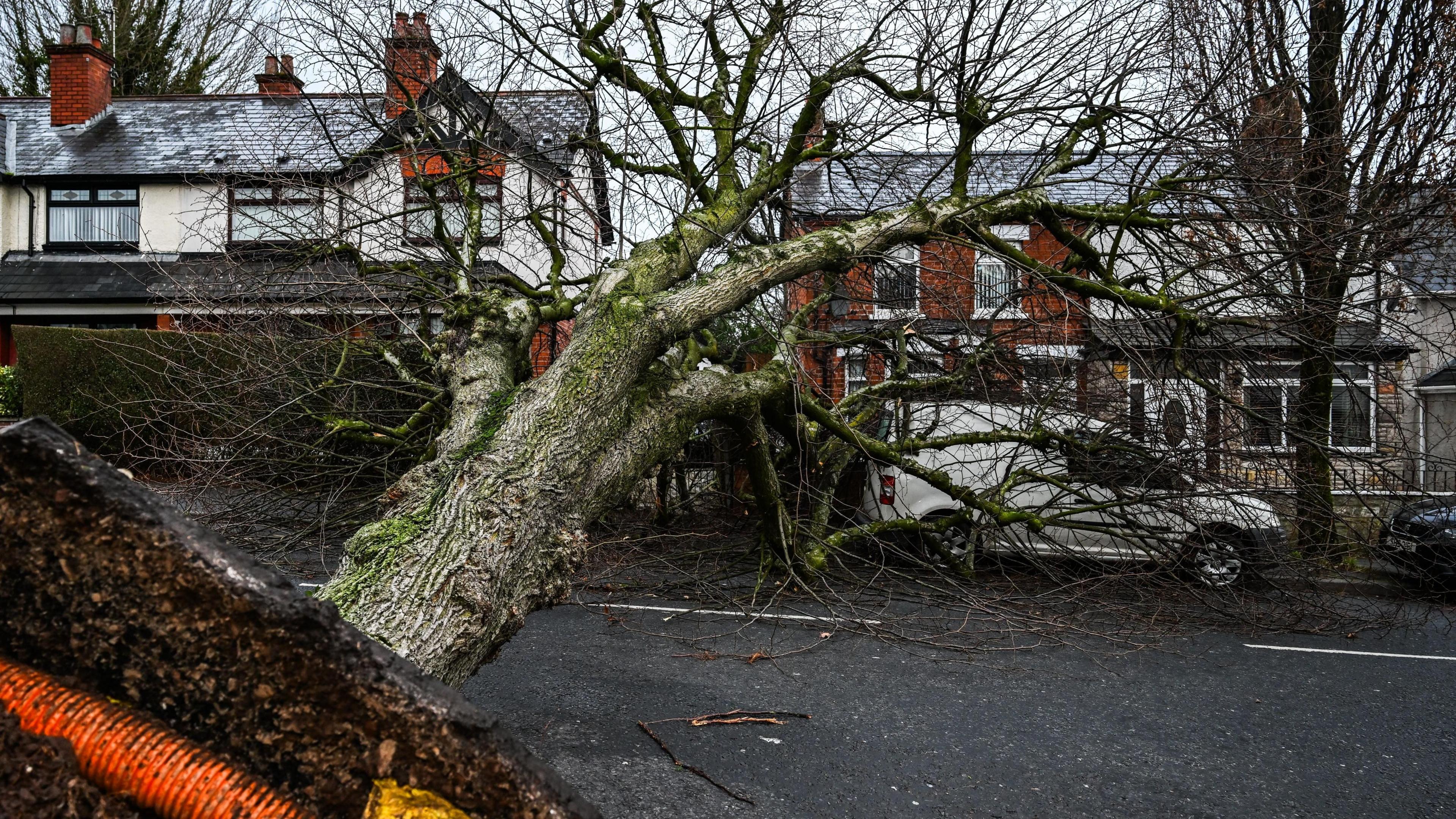Hiding in a tunnel - Chris Page on reporting on savage Storm Éowyn
On 23 January, reporting from Westport where Éowyn would make landfall
- Published
News stories about extreme weather affect millions of lives – and that is reflected in huge audiences.
For journalists – they are challenging to cover.
We have the task of putting out information and conveying the seriousness of the situation to the public - and also taking steps to keep ourselves safe.
Red warnings indicate there is a danger to life – and the authorities do not take lightly the decision to issue the alert.
Assessing the risk is part and parcel of our approach to these stories.
Camera operator Niall Gallagher and I went to Westport on the Atlantic coast of Ireland ahead of the red warning coming into force.
We knew in advance that some of the strongest winds in the UK and Ireland would be felt on the western seaboard.
During the hours of the highest level of alert – it was clearly too dangerous to go out into the open.
The sight and sound of debris crashing onto the ground bore testament to the risk that the national weather service, Met Éireann, and emergency services have been speaking about.
So we set up for live broadcasting in a tunnel, connecting our hotel car park to the street.
It meant we can have a good look at the scenes outside, and get an idea of how ferocious the gales were - while remaining sheltered.
This enabled us to film pictures which sufficiently put across the savagery of the storm, without taking a major safety risk.

This tree narrowly missed two houses in Belfast as winds of more than 90mph were recorded in Northern Ireland
After the red warning expired, we made the decision to head out again – to survey the damage, talk more to local people, and assess the scale of the clear-up which communities were facing.
Covering the most intense storm to hit the island of Ireland in many years is a team effort – and we are always reliant on our colleagues in BBC Northern Ireland, who have been gathering material from numerous towns, cities and villages.
BBCNI's headquarters at Broadcasting House in Belfast switched to a back-up electricity generator as the busy lunchtime news period approached.
It was a plan to enable the programmes to stay on air, if the wave of power cuts reached the building.
Whether you are in a newsroom or "on the ground" – having a plan B (and often a C and D) is often valuable.
It's never more important than when covering bad weather.
If the pattern of recent times continues, we'll be doing it more frequently in the coming years.
Related topics
- Published24 January

- Attribution
- Published1 August

- Published24 January
